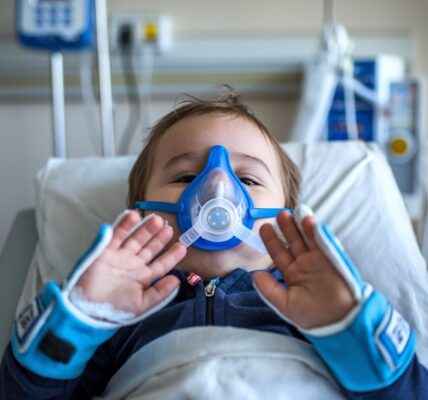Lipedema is an abnormal buildup of fat in your lower body. It’s a long-term condition that can affect up to 11% of women. Almost all the people who have lipedema are women. Lipedema happens when fat is distributed in an abnormal way beneath your skin, usually in your buttocks and legs. Although it begins as a cosmetic concern, it can eventually cause pain and other problems.
Lipedema vs. cellulite
Cellulite is fat that collects beneath the skin and makes it look lumpy or dimpled. Unlike lipedema, cellulite is only a cosmetic condition, and it doesn’t cause pain.
Lipedema vs. lymphedema
Lipedema can be mistaken for obesity or lymphedema. Your body’s lymphatic system, which helps protect you against infection, moves a fluid called lymph through your body. When lymph builds up because lymph vessels or nodes that the fluid travels through are missing, damaged, or removed, that buildup is called lymphedema. Both lipedema and lymphedema can cause swelling, but lipedema is not caused by lymph buildup.
Lipedema can lead to lymphedema. With lipedema, over time, fat cells can block the vessels of your lymphatic system. This blockage prevents the proper drainage of lymph fluid, leading to lymphedema.
If not treated, lymphedema can lead to problems such as infections, delayed wound healing, development of scar-like tissue called fibrosis, and hardened skin in the legs.
Unlike lymphedema, lipedema doesn’t start in the lower legs (feet and ankles) but the upper legs, and it isn’t related to prior surgery. It usually affects both legs.
Symptoms and possible complications of lipedema
Symptoms of lipedema may include discomfort, fatigue, frequent bruising, edema (swelling), and pain in the legs and other affected areas.
“But the main complaint is, without a doubt, the aesthetic discomfort, which prevents the patient from wearing clothes that show off her legs. There is also much talk about the psychological disorders caused by lipedema, however, research suggests that psychological changes precede the event and can lead to weight gain, which in turn worsens lipedema,” says Lidiane Rocha, a specialist in angiology and vascular surgery and a member of the Modern Phlebology Committee of the Brazilian Society of Angiology and Vascular Surgery – São Paulo Region (SBACV-SP).
“Patients with lipedema are more susceptible to joint injuries. In more advanced cases, they may have difficulty walking and consequent muscle atrophy,” adds Mauro Figueredo Carvalho de Andrade, vascular surgeon and member of the Department of Lymphatic Diseases at SBACV-SP.
Furthermore, according to the specialist, the disease evolves in five stages: it begins in the pelvic region and continues through the hips, buttocks, thighs and legs, with the possibility of affecting the lymphatic system . “The exact mechanism of this lymphatic injury is not very clear. Also, due to the malfunction of the leg muscles, due to the physical restriction caused by lipedema, the venous system of the lower limbs may present inadequate function.”
Lipedema symptoms
The main symptoms of lipedema are:
- Accumulation of fat in both legs, buttocks, hips and ankles;
- Swelling of the affected limbs and pain in the area when touching or walking;
- Difficulty walking due to accumulated fat;
- Presence of nodules, which are identified by palpating the region;
- Joint pain;
- Loss of skin elasticity;
- Feeling of heavy legs;
- Small red or purple ‘spider veins’ under the skin;
- Bags or lumps of fat above or below the knee.
Additionally, when not treated properly, the accumulation of fat cells caused by lipedema can block the lymphatic vessels, which are responsible for draining fluid from the tissues to the blood vessels.
Stages of lipedema
Lipedema can also be classified into some stages according to the symptoms that appear, which are:
- Stage I: The skin surface is normal and swelling increases during the day but improves with rest;
- Stage II: the surface of the skin is irregular, and the presence of grooves, such as cellulite, can be observed;
- Stage III: the accumulation of fat is greater, making it possible to identify deformities, in addition to the surface of the skin being rougher and harder;
- Stage IV: in addition to the accumulation of fat, there is an accumulation of fluids in the region, which gives rise to lymphedema.
Lipedema is a chronic and progressive condition, that is, it evolves over time, starting with stage I, and when left untreated it can reach stage IV.
How to confirm the diagnosis
The diagnosis of lipedema is made by the general practitioner through the evaluation of symptoms, health history, onset of symptoms, and physical examination by palpating the fat nodules under the skin, which also allows the identification of the stage of lipedema.
In addition, some imaging tests may be requested by the doctor, such as ultrasound, magnetic resonance imaging, computed tomography, lymphoscintigraphy, dual-energy X-ray absorptiometry and bioimpedance spectroscopy, for example.
These tests allow the doctor to confirm the diagnosis and rule out other health conditions that have similar symptoms, such as lymphedema, obesity or adipose tissue tumors, for example.
Other tests that the doctor may request to identify the cause of lipedema are liver and kidney function tests, thyroid tests, lipid profile and insulin resistance, for example.
Possible causes
The exact cause of lipedema is not fully understood, but it is believed to be caused by genetic factors, as it commonly occurs in several people in the same family.
Additionally, some factors can contribute to the development of lipedema, such as hormonal changes during puberty, pregnancy or menopause.
How is the treatment done?
Lipedema treatment should be carried out under the guidance of a general practitioner, with the aim of alleviating symptoms, ensuring mobility and preventing the progression of the disease.
The main treatments that may be indicated by the doctor are:
- Regular physical activity , such as walking or swimming;
- Manual lymphatic drainage , to help reduce swelling and discomfort;
- Compression therapy , with the use of compression stockings, which allow better lymphatic drainage, reducing swelling in the legs;
- Physiotherapy , through endermotherapy or use of pneumatic compression devices.
Additionally, in some cases, your doctor may recommend liposuction to help improve the appearance of your legs or buttocks, as well as relieve symptoms such as pain or difficulty moving, for example. Learn how liposuction is performed and what the recovery is like .




